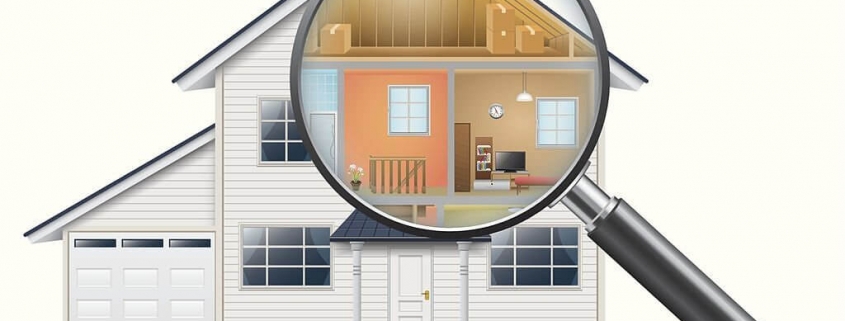What is 4 Point Inspection – Detail Guide
A new home inspection is not the same as a four-point inspection, which is performed expressly for homeowners’ insurance also called a buyer’s inspection or real estate inspection. 4-point inspection services are a little bit more than that, even though it essentially informs your insurance provider of the risk they are accepting when they insure your house. The four essential parts of a 4-Point Inspection are the roof, the plumbing, the electrical system, and the heating and cooling system (HVAC).
These four regions are examined for general functionality, safety concerns, aging, and other issues that home insurance underwriters normally would want to know. Because they enable insurance firms to check properties before insuring them, 4-point inspection services have grown to be industry standards, reducing risk for all parties. This distinction is critical since a new home inspection is necessary to close on a property and satisfy mortgage eligibility requirements. Additionally, it takes 2-3 hours to finish. A four-point check is solely visual and takes around 30 minutes. This blog will elaborate on some of the fundamental knowledge regarding 4-point inspections.
4-Point Inspection
Four point inspections are essentially the four most crucial components of any house, and they are also the ones that generate the majority of annual claims for home insurance. 4-point inspections pinpoint the crucial areas where insurance claims are most frequently filed. The HVAC, plumbing, roofing, and electrical system are those four areas. The inspector will go through what has to be changed or replaced to address issues if a house fails all or part of the inspection.
Inspectors can immediately determine how well the house was maintained throughout the years by examining the visible components of each system. Insurance companies often demand four-point exams for new coverage for houses older than 25 years. However, some insurance providers could demand 4-point assessments as soon as a house is five years old.
What Should You Expect from a 4-Point Inspection?
These 4-point inspection services, however, are intended to provide insurance companies with information on the general functionality of the home’s primary four structural components.
1. HVAC (Heating, Ventilation, And Air Conditioning) System:
The age and condition of your HVAC system are the major items inspectors will be searching for. Does the system exhibit leakage symptoms? Since it illuminates the history of house insurance claims, all of this information is relevant to insurance firms. The greater the chance of errors and claims, the older the system.
2. Plumbing:
Any problems with the pipes in your building will be found during the plumbing inspection. Leaks are one of the key things to check for during a plumbing examination. Fittings that are damaged, defective, or loose might result in leaks. A comprehensive plumbing check might also reveal other problems including holes, corrosion, and fractures.
3. Roof:
Roof replacement is undoubtedly one of the most crucial tasks on the list because it costs several thousands of dollars. They want to know whether there are any missing shingles, what kind of shingles are missing, and how much it would cost to fix the roof if it were to get damaged, collapse, or need to be replaced.
4. Electrical:
The electrical inspection is simply one of four items a professional who is performing a 4-point check will look at. The other three are plumbing, roofing, and HVAC. Electrical inspections can be performed independently or in tandem with another kind of house inspection.
When Does 4-Point Inspection Require?
When your house turns 30 years old, you usually need to have a 4-point inspection done. However, the insurance provider is solely responsible. When your home becomes five years old, for instance, State Farm Insurance could demand a 4-point assessment to assess how effectively you are keeping the house.
For homeowner’s insurance policies and rental properties that are older than 30 years, 4-point inspections may be necessary, depending on the insurance provider. Regardless of the age of the property, 4-point inspections are not necessary for condominium policies or renter’s insurance policies. A licensed general or construction contractor, a building inspector, an architect, an engineer, or a member of the American Society of Home Inspectors are all required to carry out a 4 Point Inspection.
Normally, 4-point inspections must be finished within the last 12 months to be approved. If the inspection is positive and there are recent images available, exceptions may be made for inspections that are less than three years old. The regulations for home inspections differ from state to state. And regardless of your state, certain insurance firms may demand an examination before granting insurance coverage. Homes older than ten years are substantially more likely to experience this.
4 Point Inspection VS Home Inspection
Your home insurance company typically requires a 4-point inspection. To make sure the residence isn’t too much of a liability, they want to know a few details about it. They don’t particularly worry about the inside paint’s condition, but they do care if your electrical system has any parts that have a history of starting fires.
You would normally obtain a thorough home inspection if you were still debating whether or not to purchase a home, which also refers to a buyer’s inspection. It covers more scope than a 4-point checklist and will find the most significant issues with a house.
How Long Does a 4-Point Inspection Take?
A 4-point inspection is solely visual and takes around 30 minutes. However, you could be compelled to have both examinations if you purchase an older house. A thorough buyer’s inspection often takes two and a half to three hours. A full inspection is an inspection of the entire house, as opposed to a 4-point inspection, which only checks at four things.




Leave a Reply
Want to join the discussion?Feel free to contribute!